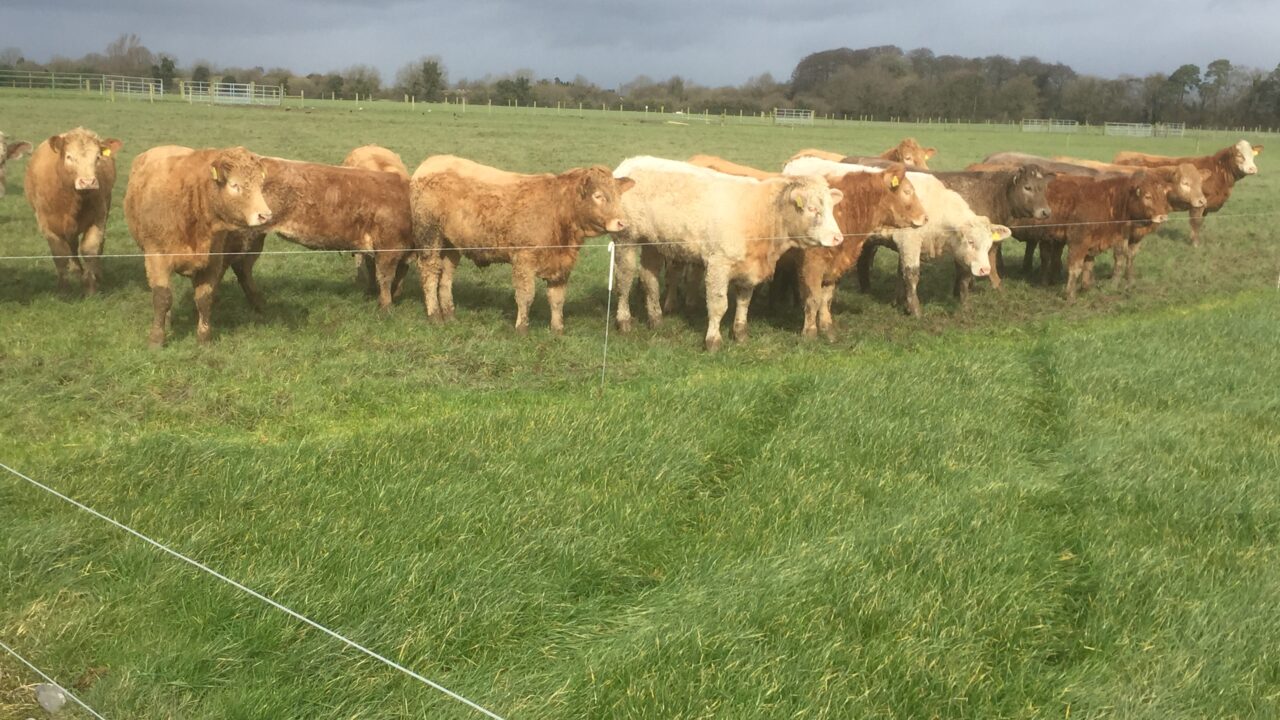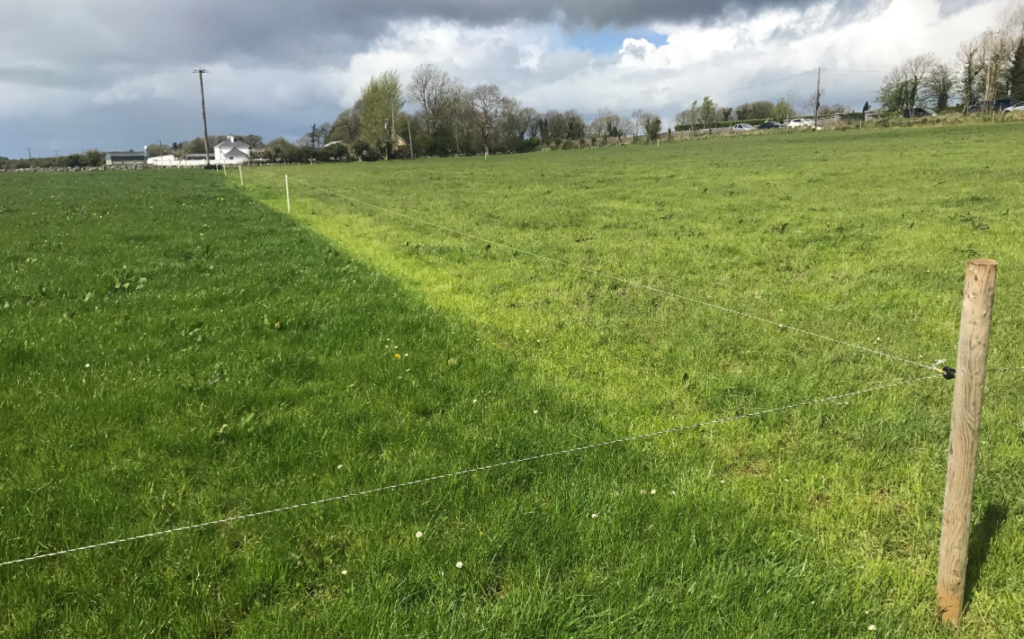With the wet weather returning over the past week, the wind and rain proved to be hard on stock that had been turned out in recent times. Some farmers had been rehousing cattle in anticipation of poor weather forecasted.
The mention of turning out lighter cattle from sheds may not be a suitable option for some farmers at the moment – with flexibility in plans being necessary.
Obviously, ground conditions are going to vary from farm to farm but hopefully in the coming weeks the dry spells will return, resulting in grazing being easier to manage on farms.
Speaking about getting cattle turned out this spring, John Douglas from the Grass 10 programme, outlined some advice for beef farmers during a recent Teagasc webinar. John stated:
“The goal of spring grazing is to set up the farm for the second rotation and get grass into the animal’s diet every day.
This can earn the farmer €2 per livestock unit (LU) per day and if you have 40LU out per day – that’s a cost saving of €80/day.
“This €2 per LU figure comes from savings on silage and meal in the shed and also the extra animal performance at grass.”
Weight gain benefits
In terms of liveweight benefits that can be achieved by getting younger cattle out to grass – there is a shift in these lighter animals putting on 0.6kg/day when housed, as these gains rise and can exceed 1kg/day at grass.
Therefore in theory, the earlier you can get your younger animals out to grass, the heavier they will be later on in the year.
“You have the potential to get much better liveweight performance from your stock if you can get them out,” John added.
“Going by the latest figures from PastureBase, there is plenty of grass grown out there, farmers just have to be more flexible around this time of year when it comes to grazing.
Tips for turnout
Getting ready for turnout requires a certain level of planning. The first thing farmers need to do is assess the paddocks on the farm and look at grass cover on each of these paddocks. Providing some advice for beef farmers, John said:
“Farmers need to remember that we are trying to set up the platform for the second round of grazing. This requires getting a good percentage of the farm grazed over the next two to three weeks.
“The more ground you graze over the next few weeks, the less risk there will be of running out of grass when it comes to April.
“If you can get them out earlier in March and get paddocks grazed off earlier, those same paddocks will be ready for grazing again in April and it will be much better quality than what you would have if you don’t graze it early.
If we can graze through some lower covers – about 7-8cm – that’s ideal. That is about 700kg of dry matter (DM) up to 1,000kg DM.
“You don’t want to graze anything lighter than that or anything heavier than that for the start of the grazing.
“The benefit of this is that the cattle can graze it easier and these lighter covers will grow back quicker because they are actually green at the base; they are not white like what would be seen in some of the heavier covers.
“In terms of your paddocks you need to be looking to target your drier paddocks with better infrastructure. If you have to put up strip wire to split paddocks – maybe move it every day if you need to, in order to avoid damaging paddocks with poaching.
Grazing without doing damage is the aim.
John went on to discuss the importance of infrastructure in achieving your grazing targets this spring. He stated:
“Infrastructure is the next step, so you may be using strip wiring, but you also need to be strategically placing your water troughs – you just need to make the most of what you have.
You should be looking at paddocks that are close to a roadway in the event that the weather does turn bad, as seen in recent days, that they can be ran back into the shed.
“Try and keep the lighter animals out if you can. You will be surprised by the amount of area they will get through even though they are lighter animals.
“Finally, the farmer should have the mindset that we can manage the grass this spring and that it is flexible. This means if cattle have to come back in to housing when there is rain, you can let them back out when ground dries up.”


